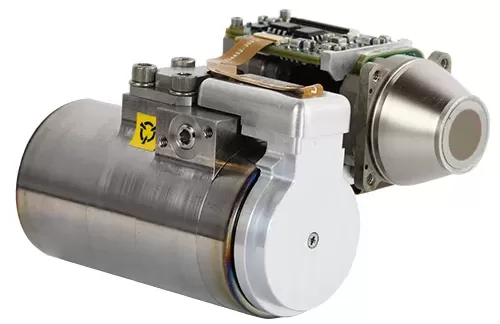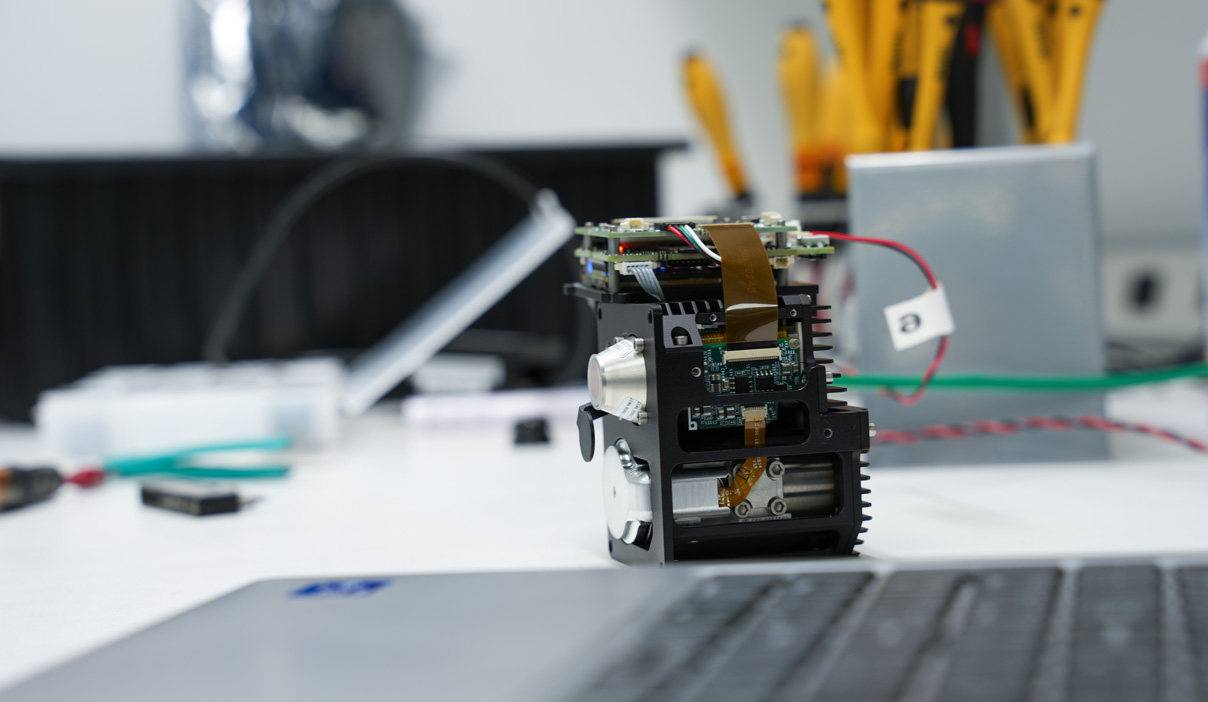Last modified on July 17th, 2024 at 9:17 am
Cryocoolers are technological marvels allowing breakthroughs in thermal imaging. Here are some factors Sierra-Olympia considers when integrating coolers for MWIR systems.
OPERATING TEMPERATURES
High Operating Temperature (HOT) cooled MWIR detectors typically operate around 140-150 kelvin(K), as opposed to traditional cooled MWIR detectors which operate at 77K. Because HOT detectors operate at a higher temperature, there is less stress on their cooling mechanism leading to faster cool-down times, and a longer cooler life, meaning a lower cost of ownership. In addition, they consume less power in a smaller volume (Low-SWaP).
An example of a HOT detector material is Mercury Cadmium Telluride (HgCdTe), used in the DRS Hexablu Sensor, which has a demonstrated 24,000+ hour cooler lifetime. HgCdTe sensors. These sensors have an additional advantage, which is their excellent heat dissipation. This reduces unwanted thermal noise, which the sensor cannot distinguish from signal.
Mean Time Between Failures(MTFB)
Mean time to failure(MTTF) can also be categorized with mean time between failures(MTBF). Both give a measurable performance metric to how long the cooler can be expected to last while in operation. While the two are similar “between failures” indicates that a cooler can be repaired and continue operation. The cooler Sierra-Olympia selected for its latest line of high definition long range products is the Hexablu by DRS. When tested in environments between 15⁰C to 64⁰C and having ground mobile stress levels applied to the component as outlined by the Department of Defense in Washington DC, the cooler showed no signs of degradation after 24,000+ hours. That’s almost 3 years of operation with no signs of maintenance being needed. In accelerated life testing the cooler has had no measurable signs of degradation over 11.5 years of testing. The tests for these coolers are ongoing.

Modular Transfer Function(MTF)
The Modulation Transfer Function (MTF) is a measure of how well a camera reproduces image detail from a scene. The Hexablu’s small pixel pitch (6um) with minimal crosstalk provides an excellent detector MTF, allowing the sensor to reproduce finer details than other MWIR sensors. In addition, its HD format (1280×960) allows a larger FOV or longer focal length lenses. Finally, the Hexablu is compatible with F/2.6 lenses, which collect 4x the light as their F/4 counterparts.
Use cases for a MWIR system can vary significantly. Security cameras often sit on one spot and need to run around the clock for several months at a time. Cameras used for inspection are mobile and powered on and off many times in any given week, putting the cooler through many stressful cycles. Sierra-Olympia is not exclusive to one type of cooler. We have worked with many vendors selecting the building reliable systems with the best-in-class components and producing the highest quality image.


